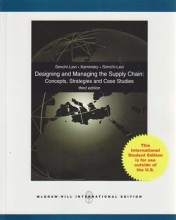Questionnaire Design
12 important questions on Questionnaire Design
What are the criteria for a good questionnaire?
Does it consider the respondent? Type of respondent, interviewing environment, questionnaire length. A questionnaire should be designed explicitily for the intended respondents. Use sumple, everyday language, as long as the reslt is not insulting or demeaning to the respondent.
Does it meat editing and coding requirements? Editing = going through each questionnaire to ensure that skip patterns were followed and the required questions filled out.
The questionnaire must be translatable into findings that respond to the manager's original questions.
What are the steps in the questionnaire design proces?
2 Determine data collection method;
3 Determine question response format;
4 Decide on the question wording;
5 Establish questionnaire flow and layout;
6 Evaluate the questionnaire;
7 Obtain approval of all relevant parties;
8 Pretest and revise;
9 Prepare a final copy;
10 Implement the survey.
What are survey objectives?
- Higher grades + faster learning
- Never study anything twice
- 100% sure, 100% understanding
What is the laddering technique?
1 Feature (Video cameras in cars to make blind spots more visable);
2 perceived benefits (I won't back into something);
3 Physical consquences (I won't destroy anything);
4 Emotional consequences (damage to the car is stresful);
5 Core value (I have peace of mind).
What are problems with dichotomous questions?
2 Responsed frequently fail to communicate any intensity of feeling on the part of the respondent.
What are problems with multiple-choice questions?
2 Researcher must settle on a range of possible answers;
3 Position bias: respondents will typically choose either the first or last alternative, all other things being equal.
What are scaled response questions?
+ Scaling permits measurement of intensity;
+ Allows for more powerful statistical tools.
What are the general guidelines for wording questions?
2 The wording must not bias the respondent;
3 The respondent must be able to answer the questions;
4 The respondent must be willing to answer the questions.
How is clarity in wording achieved?
How do you make sure that respondents are able to answer questions?
2 Do not use long time frames for recalling, max is a week back in time.
What is a counterbiasing statement?
What are the guideline for the quenstionnaire flow and layout?
2 Begin with a question that sparks interest;
3 Ask general questions first;
4 Ask questions that require "work" in the middle;
5 Insert prompters (short encouraging statements to rebuild respondents interest) at strategic points;
6 Position sensitive, threatening and demographic questions at the end;
7 Put instructions in capital letters;
8 Use proper introduction and closing.
The question on the page originate from the summary of the following study material:
- A unique study and practice tool
- Never study anything twice again
- Get the grades you hope for
- 100% sure, 100% understanding






























